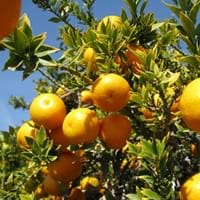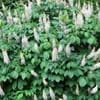Life Span
Perennial
Perennial
Origin
Southeastern United States
Hybrid origin
Types
Not available
Citrus nobilis, Murcott, Setoka
Number of Varieties
Not Available
Habitat
Bluffs, Coastal Regions, Stream side, Woods
Subtropical climates
USDA Hardiness Zone
5-9
9-11
Sunset Zone
Not Available
H1, H2, 8, 9, 12, 13, 14, 15, 16, 17, 18, 19, 20, 21, 22, 23, 24
Habit
Spreading
Spreading
Flower Color
White, Pink
White
Flower Color Modifier
Bicolor
Bicolor
Leaf Color in Spring
Green
Dark Green
Leaf Color in Summer
Dark Green
Dark Green
Leaf Color in Fall
Lemon yellow, Yellow green
Dark Green
Leaf Color in Winter
Not Available
Light Green
Leaf Shape
Palmate
Willow-shaped
Plant Season
Spring, Summer, Fall
Spring, Summer, Fall, Winter
Sunlight
Full Sun, Partial Sun, Partial shade
Full Sun, Partial Sun
Type of Soil
Clay, Loam, Sand
Loam
The pH of Soil
Acidic, Neutral, Alkaline
Acidic, Neutral
Soil Drainage
Average
Well drained
Bloom Time
Summer, Late Summer
Indeterminate
Tolerances
Salt, Wind
Drought
Where to Plant?
Ground, Pot
Ground, Pot
How to Plant?
Cuttings, Seedlings
Leaf Cutting, Stem Cutting
Plant Maintenance
Low
Medium
Watering Requirements
Keep the Soil well drained, Requires regular watering
Average Water Needs, Needs watering once a week, Never Over-water
In Summer
Lots of watering
Lots of watering
In Spring
Moderate
Moderate
In Winter
Average Water
Average Water
Soil pH
Acidic, Neutral, Alkaline
Acidic, Neutral
Soil Type
Clay, Loam, Sand
Loam
Soil Drainage Capacity
Average
Well drained
Sun Exposure
Full Sun, Partial Sun, Partial shade
Full Sun, Partial Sun
Pruning
Remove damaged leaves, Remove dead branches, Remove dead flowers, Remove dead leaves
Remove damaged leaves, Remove dead branches, Remove dead leaves
Fertilizers
14-14-14 Fertilizer, Apply N-P-K, slow-release fertilizers
slow-release fertilizers
Pests and Diseases
Edema, Powdery mildew, Verticillium Wilt
Aphids, Black sooty mold, Brown Rot, Citrus canker, Leafminers, Psyllids, Red blotch, Scab
Plant Tolerance
Salt, Wind
Drought
Flowers
Showy
Insignificant
Flower Petal Number
Single
Single
Foliage Texture
Coarse
Medium
Foliage Sheen
Matte
Glossy
Attracts
Butterflies, Hummingbirds
Birds, Butterflies
Allergy
Pollen
cramps, Itchiness, Swelling in mouth, Vomiting
Aesthetic Uses
Cottage Garden, Showy Purposes
Beautification
Beauty Benefits
Not Available
Not Available
Environmental Uses
Air purification, Wildlife
Air purification
Medicinal Uses
Antirheumatic, Colic, constipation, Piles
Vitamin C
Part of Plant Used
Seeds
Fruits
Other Uses
Used for making soaps
Used As Food, Used for its medicinal properties
Used As Indoor Plant
No
Yes
Used As Outdoor Plant
Yes
Yes
Garden Design
Feature Plant, Foundation, Screening, Wind Break
Edible, Fruit / Fruit Tree
Botanical Name
AESCULUS parviflora
CITRUS x nobilis
Common Name
bottlebrush buckeye, dwarf horse chestnut
Tangor, Temple Orange
In Hindi
Bottlebrush Buckeye
Tangor
In German
Buckeye Putzer
Tangor
In French
Bottlebrush Buckeye
Tangor
In Spanish
bottlebrush Buckeye
Tangor
In Greek
bottlebrush Buckeye
Tangor
In Portuguese
Bottlebrush Buckeye
Tangor
In Polish
Bottlebrush Buckeye
Tangor
In Latin
bottlebrush Buckeye
Tangor
Phylum
Magnoliophyta
Magnoliophyta
Class
Magnoliopsida
Magnoliopsida
Order
Sapindales
Sapindales
Family
Hippocastanaceae
Rutaceae
Clade
Angiosperms, Eudicots, Rosids
Angiosperms, Eudicots, Rosids
Tribe
Not Available
Not Available
Subfamily
Hippocastanoideae
Not Available
Number of Species
Not Available
Season and Care of Bottlebrush Buckeye and Tangor
Season and care of Bottlebrush Buckeye and Tangor is important to know. While considering everything about Bottlebrush Buckeye and Tangor Care, growing season is an essential factor. Bottlebrush Buckeye season is Spring, Summer and Fall and Tangor season is Spring, Summer and Fall. The type of soil for Bottlebrush Buckeye is Clay, Loam, Sand and for Tangor is Loam while the PH of soil for Bottlebrush Buckeye is Acidic, Neutral, Alkaline and for Tangor is Acidic, Neutral.
Bottlebrush Buckeye and Tangor Physical Information
Bottlebrush Buckeye and Tangor physical information is very important for comparison. Bottlebrush Buckeye height is 180.00 cm and width 180.00 cm whereas Tangor height is 300.00 cm and width 180.00 cm. The color specification of Bottlebrush Buckeye and Tangor are as follows:
Bottlebrush Buckeye flower color: White and Pink
Bottlebrush Buckeye leaf color: Green
Tangor flower color: White
- Tangor leaf color: Dark Green
Care of Bottlebrush Buckeye and Tangor
Care of Bottlebrush Buckeye and Tangor include pruning, fertilizers, watering etc. Bottlebrush Buckeye pruning is done Remove damaged leaves, Remove dead branches, Remove dead flowers and Remove dead leaves and Tangor pruning is done Remove damaged leaves, Remove dead branches and Remove dead leaves. In summer Bottlebrush Buckeye needs Lots of watering and in winter, it needs Average Water. Whereas, in summer Tangor needs Lots of watering and in winter, it needs Average Water.





